Koral Parba or “Thene Habba” is an important celebration in Tulunadu region. This festival is celebrated in different ways by the people across the region but the fundamental reason for the celebrations are the same. There may be differences in the timing of the celebrations depending on local traditions. This Habba is also called in different names as Puddar or ’illa dinjavune’ (filling house with grains) or ‘Koral Parba’.
“Koral” is derived from a Tamil word “Korali”, a synonym for a millet called “thinai”. This Koral is known as ‘thene’ in Tulu, which is a variant of the Tamil word “thinai”, the millet. This festival in Tulu is also called Thene parba.
Most of our festivals are related or connected to agriculture i.e. our crop and Harvest. This is one such festival celebrated in Tulunadu region before the harvest of the first crop of the season. This festival is celebrated in September, before the harvest of ‘Enel’ crops. Usually, it is celebrated on the next day of Cauvery Sankramana i.e. the first day of Nirnal month as per the Tulu calendar. It is a tradition in Tulunadu region to prepare Manni as a healthy sweet dish on Sankramana day. Some families do this on Chauthi (Ganesha Chathurthi) as well.
On Koral Parba day
All family members bathe early in the morning on this day and clean the entire house including the yard outside (‘jaal’ in Tulu). They also wash their equipment used regularly for cultivation and household activities. Before eating any food, male members of the family go to their fields to bring Koral (ear or spike of paddy corn). Head of the family first offers his prayer to the crop and field and cuts the first ‘Thene’ (Koral-grown ear or spike of the paddy corn).
All other members, including small girls follow him with a handful of ‘Thene’ each. The number of collected ear of corns (Thene) should be odd i.e. 3,5,7 or 9. When they bring home the ‘Thene’, they chant ‘Poliyo Poli’ as a prayer for prosperity and good tidings.
The family members keep the ‘Thene’ carried with so much devotion, in front of the ‘Tulasi’ Katte or Kuladevatha on a banana leaf along with all the cleaned equipment used for agricultural purposes. Different kinds of leaves such as mango, bamboo, jackfruit, betel leaves, skin of Aaladamara (a type of tree filled with milk), traditional flowers, arecanut along with different vegetables grown in the field are also added to the banana leaf along with the Koral.
All members of the family collectively pray there for the prosperity of family members, house and crop. This is called ‘Hosthu or illa dinjavune’. It is a ritual of honoring Mother Earth and paying gratitude to the food grains, mainly paddy.
Then the family members prepare small bunches of a set of all leaves together along with ears of the corn. This is tied at all the important places in the house such as entrance, poles, cowshed, household equipment, instruments, ploughs and vessels.
Puddar da Vanas
They cook the rice by adding odd number of new rice grains and enjoy lunch together along with many types of local dishes prepared on the occasion. This meal, popularly called “Puddar da vanas”, is a celebration by itself with many flavourful dishes. “Menthe da Ganji”, a sweet dish prepared with rice & fenugreek seeds is one of the mandatory dishes among many.
An imporant part of this tradition is to first offer the meal, usually on a banana leaf, to the ancestors. This is accompanied by a small prayer by an elder of the family. The full meal after the prayer is kept outside waiting for a crow to sample the offering as mark of acceptance by the ancestors. The food is served to everybody after the crows start eating.
The interesting part of this Tulunadu tradition is that local Christians also celebrate it with equal fervour on 5th September every year and enjoy a hearty vegetarian “Puddar da vanas”. They collect their “Koral” from the local church to conduct the ritual in their own way.

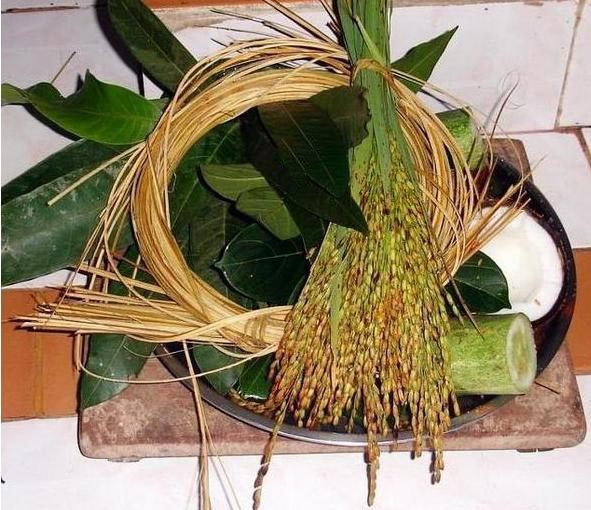
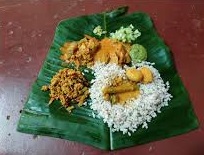


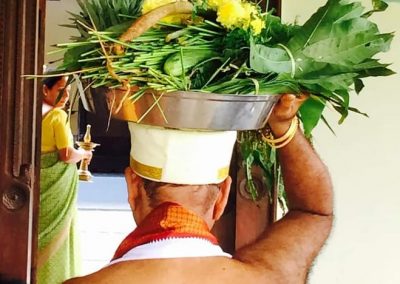
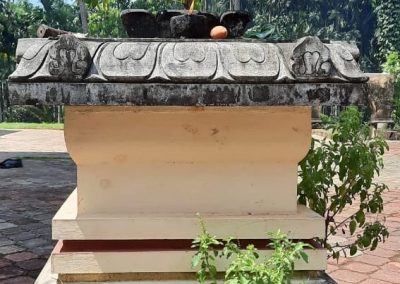
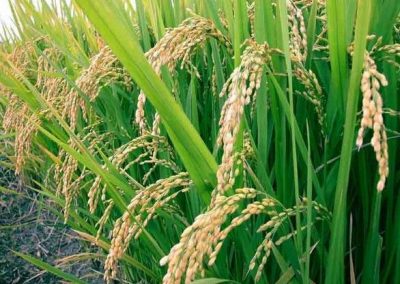
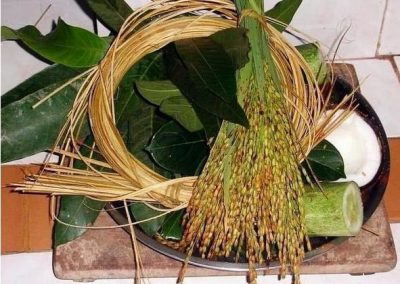
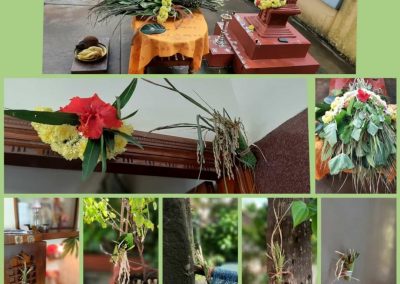
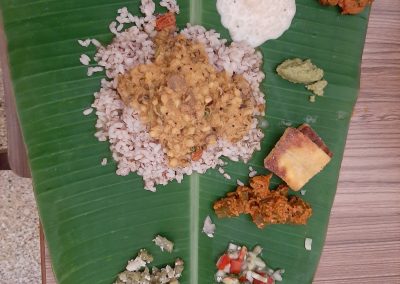

Recent Comments